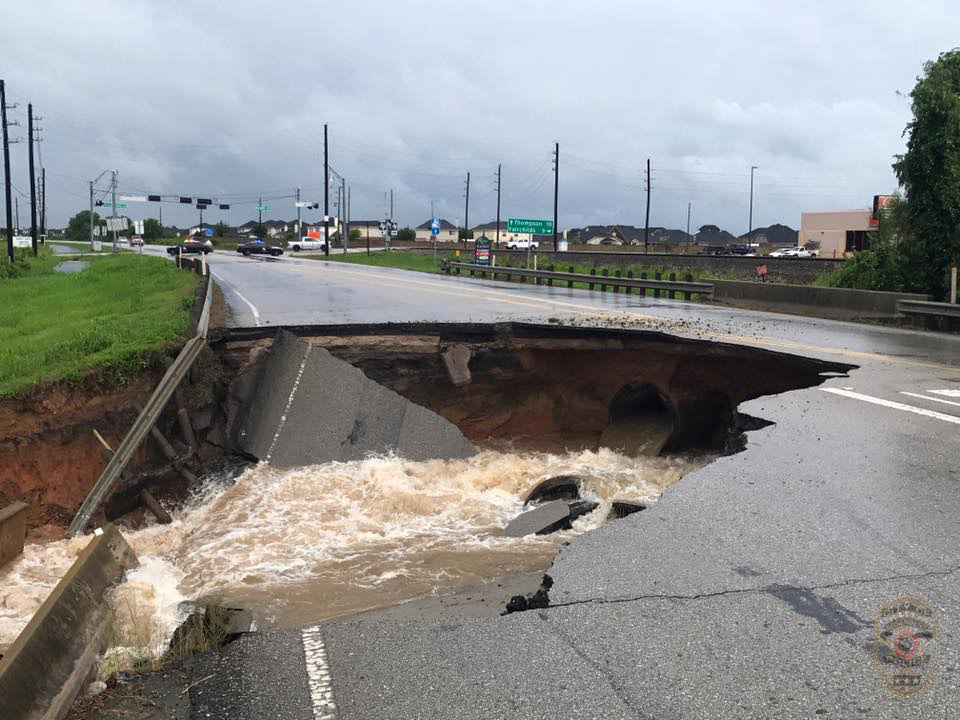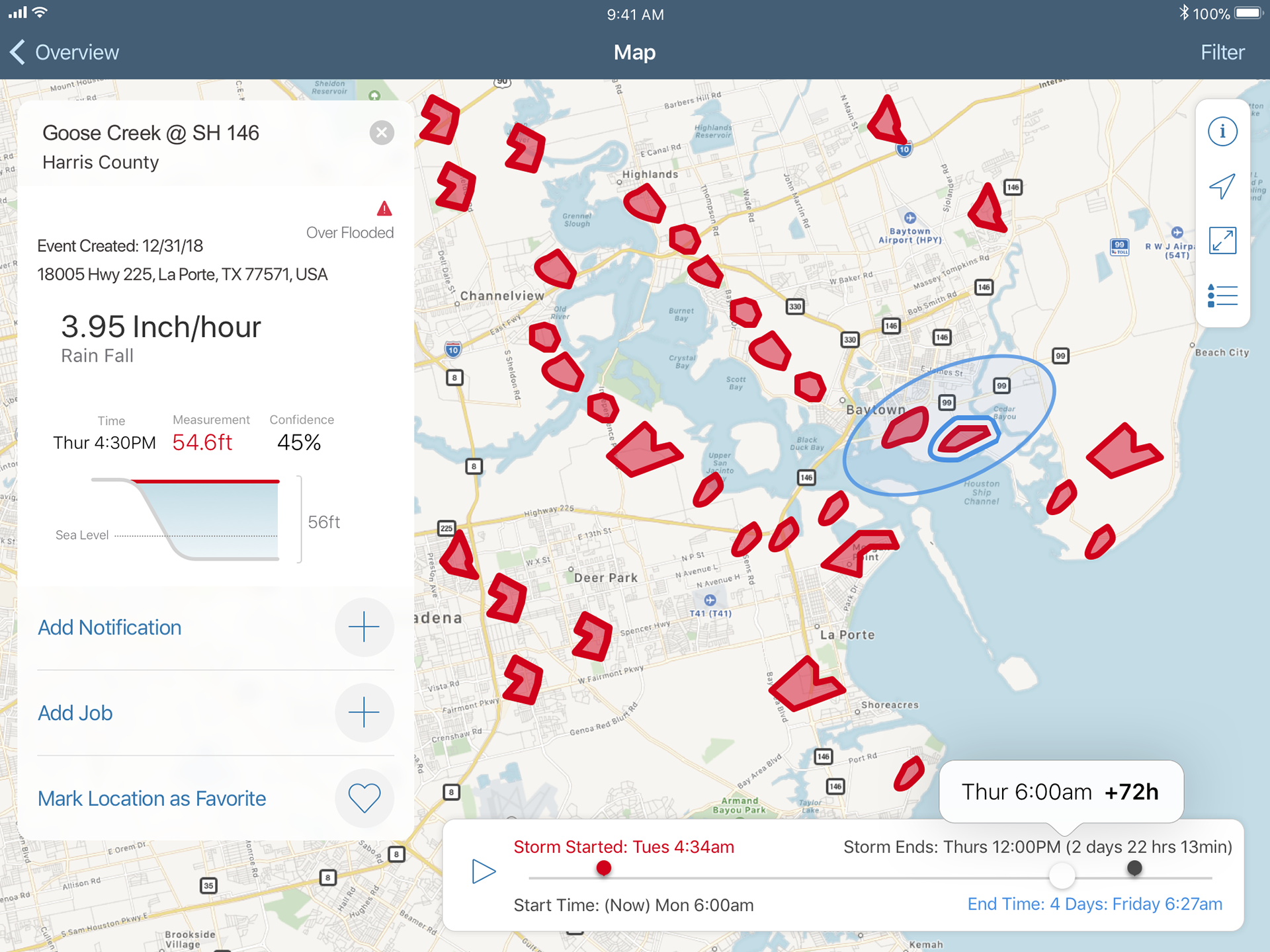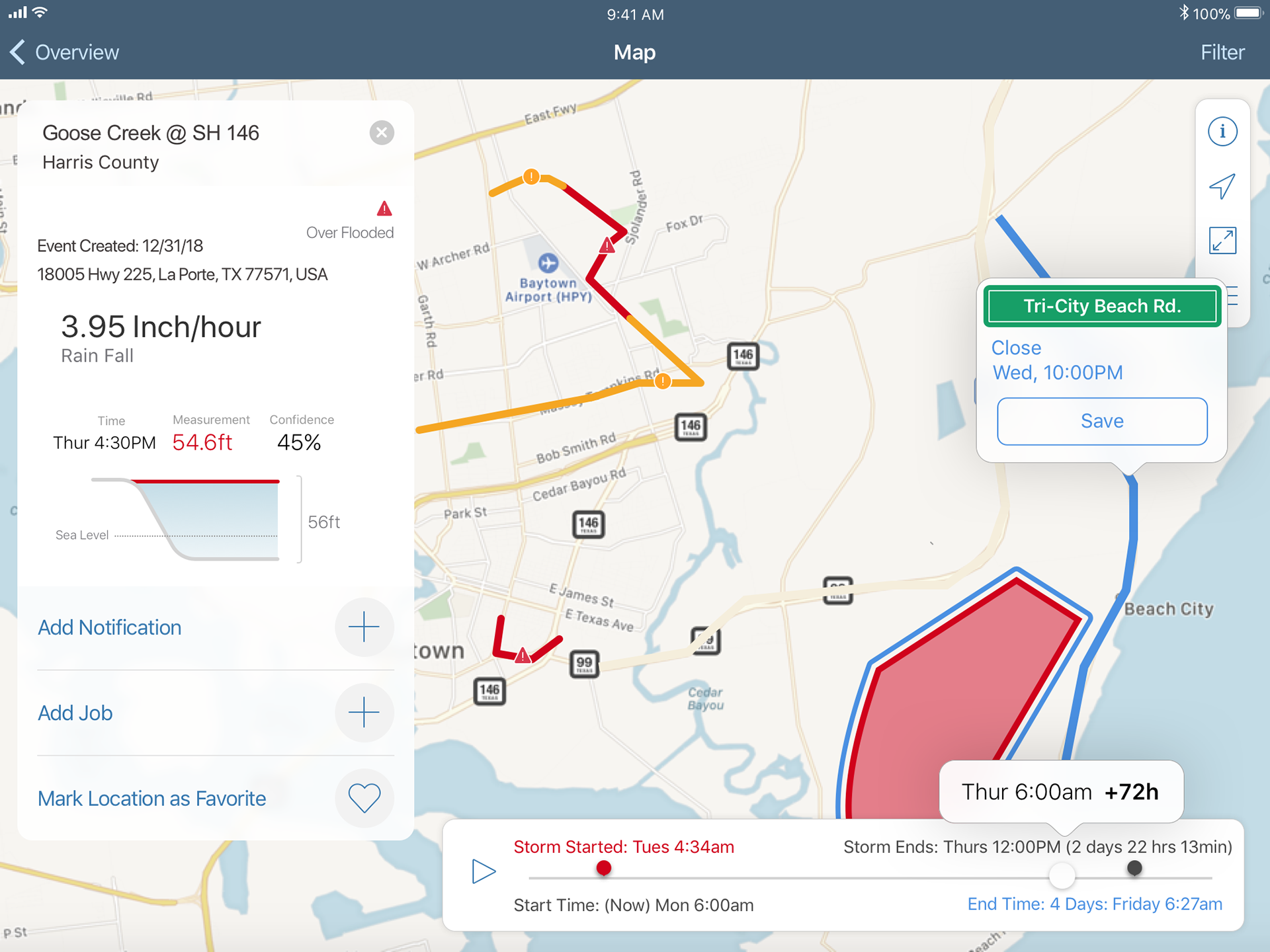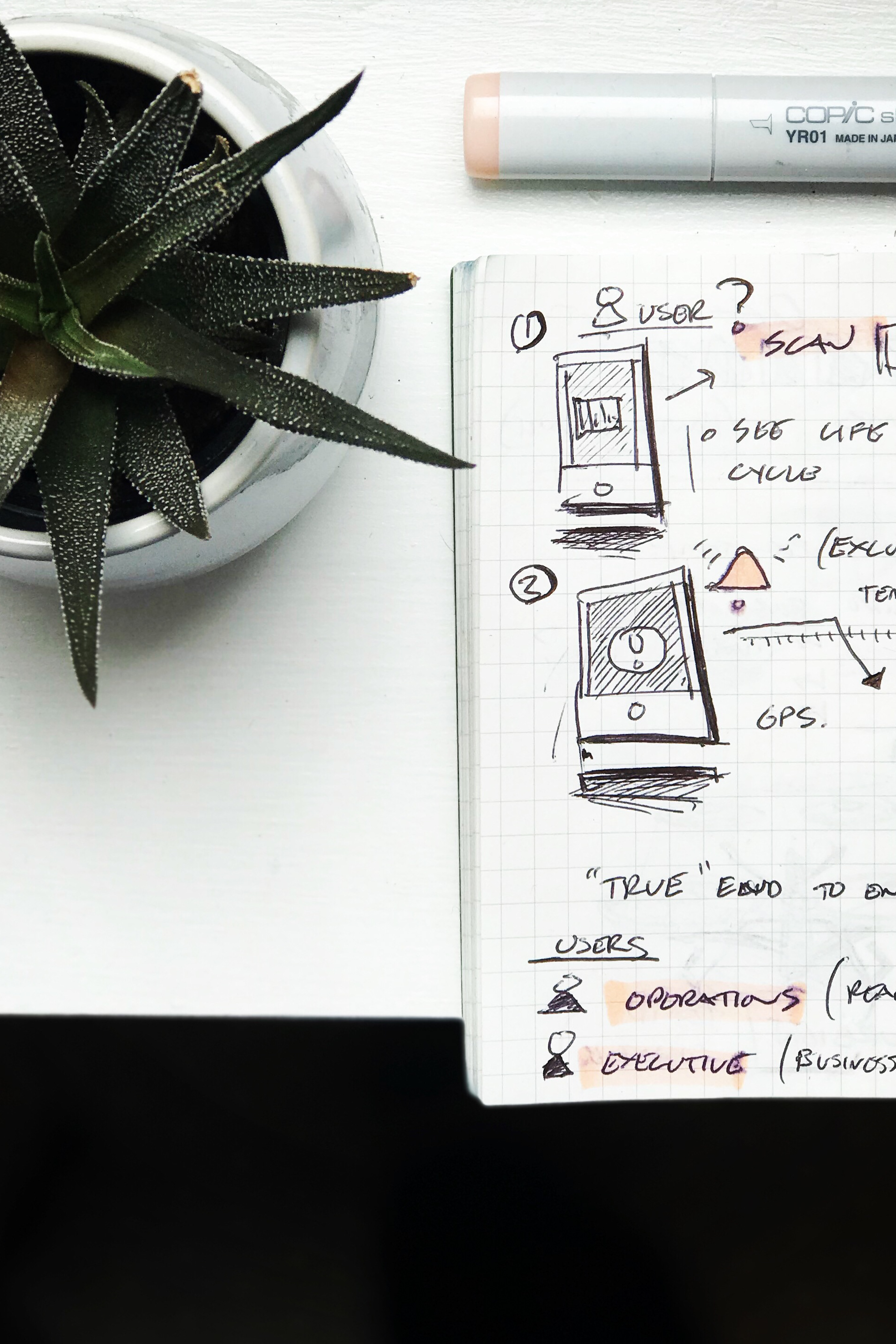Flood Watch
Case Study No. 05
"We need a better way to approach large-scale disasters."
The Flood Prevention Project uses crowdsourcing, water sensors, and real-time planning/allocation to enable dispatch teams, first responders, all the way down to citizens to proactively plan, accurately react to unforeseen events during the storm and most importantly to share data to paint a large picture.
5 week Proof of Concept
The Problem
Our approach is outdated and Natural Disasters are becoming more and more common. Below are some pictures of Hurricane Harvey that hit the city of Houston, Texas in August 2017.

City of Houston

Houston Highway


Before and After

Bayou Normal Levels (Before)

Bayou Overflowed (After)
Buffalo Bayou in 2017 from a high rise in Memorial Heights in west Houston, Texas.
(Bayou: is manmade marshy body of water to help control flooding)
Photos taken by Aaron Cohan.
Designs & Concepts
Building a team. Who made the cut?
Part of the concept of this project was simply enabling these 3 parties to effectively communicate.
1. Citizens: Allowing citizens to get notifications and post emergencies that happen real-time.
2. Dispatch Leaders: Dispatchers seeing a big picture (bayou levels changing, or responding and allocating Emergencies.
3. First Responders: And of course lastly the first responder on the ground getting all the information they need in real-time so they can effectively manage and save lives.
Reactive: Crowd Source Scenario
Seeing the storm from all angles.
Allowing users to post pictures and tag locations. (Whether it's a life threatening emergency, or just a possible sink hole)
Citizen: See something and post it.
After a emergency had been posted, a dispatcher has lots to do.
They will assess and begin to allocate resources to it. In this case, the dispatcher decided to allocated 3 responders and a Fire Engine for this particular emergency.
After allocating, a notification will be sent to a or multiple first responders in real-time.
(Fire Fighters, Police, Paramedics)
This allows them to quickly assess the issue before showing up to the actual emergency and also an accurate and up-to-date route based on flooding and the changing enviroment .
Dispatcher: Allocating assets to the non-emergency (Sink-Hole)
A key aspect of the design concept and overall story was
not only a reactive solution, but proactive solution as well.
What can we do before the storm strikes?
Proactive Scenario
Strike before it strikes you!
Dispatchers and Emergency Strategy Team have the ability to brain storm and take action before the storm even hits. Here we see them closing a road down based on when it predicts it'll flood. Predictions based on existing water-level sensors in Bayous and machine learning.
Dispatch or Emergency Strategy Team: Planning to close a road down based on flood predictions.
Assessing and reacting to real-time water level changes.


The Rainbow
We had the pleasure of presenting the idea to the Harris County Flood Control, Harris County Fire Chiefs, A Harris County Judge, and other emergency management teams.





